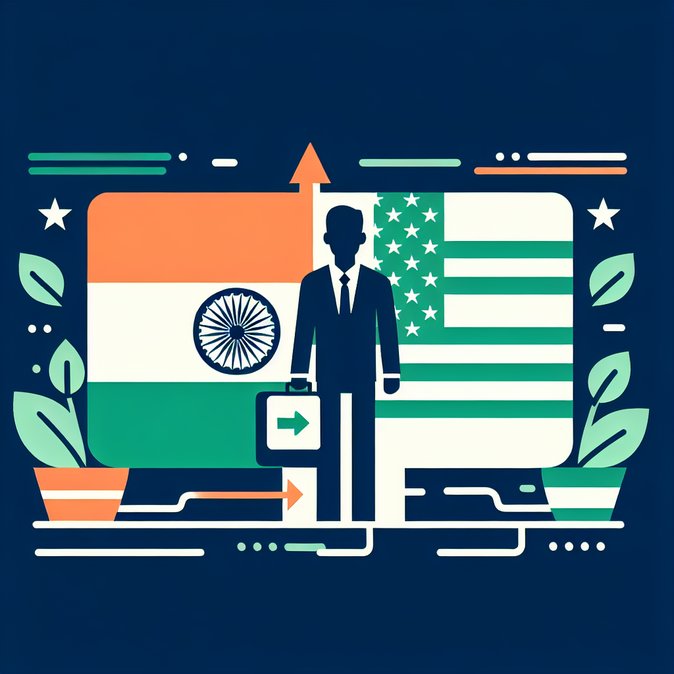
Indian professionals waiting years for US green cards woke up to encouraging news on 16 November when the US State Department released the December 2025 Visa Bulletin. Employment-based (EB) cut-off dates for India all inched forward: EB-1 moved by one month to 15 March 2022, EB-2 advanced one month and 14 days to 15 May 2013, and EB-3 improved by a month to 22 September 2013. The EB-4 category (including certain religious workers) advanced to 1 September 2020 and EB-5 “unreserved” investors saw the biggest leap—five months—to 1 July 2021.
Although the movement is modest, it breaks a stagnant pattern that has frustrated Indian employers and would-be immigrants for most of 2025. Immigration lawyers say even a 30-day advance can allow thousands of applicants whose priority dates have just become current to file final adjustment applications, obtain work/travel authorization, and lock in dependent children’s ages under the Child Status Protection Act. Corporates can also accelerate succession planning for key H-1B talent whose visas are nearing the six-year limit.
Background: Indians account for roughly 75 percent of all approved H-1B petitions and dominate the EB queues. Over the past decade, astronomic demand plus strict annual per-country caps have created waits exceeding 10 years for EB-2 and EB-3. The temporary freeze that began in mid-2024 was largely driven by a post-pandemic filing surge and a legislative impasse on recapture of unused green-cards.
![US December 2025 Visa Bulletin Brings Rare Relief for Indian EB-1, EB-2 and EB-3 Applicants]()
Why now? According to State Department officials, lower worldwide demand in several categories freed up “otherwise unused” numbers that must be re-allocated by statute before the fiscal year ends on 30 September 2026. The agency also cited “data reconciliation” with USCIS that revealed slightly higher visa availability.
Practical implications for Indian employers:
1. File adjustment‐of-status (I-485) packets immediately for employees whose priority dates are now current to secure employment authorization documents (EADs) valid for five years under the latest USCIS rule.
2. Upgrade EB-3 filings to EB-2 or EB-1 where eligible—especially outstanding researchers and multinational managers—to benefit from faster categories should the trend continue.
3. Encourage employees with children approaching 21 to take advantage of the CSPA age-freeze triggered by an I-485 filing.
Outlook: Most attorneys expect only incremental forward movement through Q1 2026 unless Congress raises per-country limits. Nevertheless, this month’s bulletin offers a psychological boost and a narrow filing window that mobility managers should exploit. Companies that have held back on US assignments due to immigration uncertainty may wish to revisit those plans.
Although the movement is modest, it breaks a stagnant pattern that has frustrated Indian employers and would-be immigrants for most of 2025. Immigration lawyers say even a 30-day advance can allow thousands of applicants whose priority dates have just become current to file final adjustment applications, obtain work/travel authorization, and lock in dependent children’s ages under the Child Status Protection Act. Corporates can also accelerate succession planning for key H-1B talent whose visas are nearing the six-year limit.
Background: Indians account for roughly 75 percent of all approved H-1B petitions and dominate the EB queues. Over the past decade, astronomic demand plus strict annual per-country caps have created waits exceeding 10 years for EB-2 and EB-3. The temporary freeze that began in mid-2024 was largely driven by a post-pandemic filing surge and a legislative impasse on recapture of unused green-cards.

Why now? According to State Department officials, lower worldwide demand in several categories freed up “otherwise unused” numbers that must be re-allocated by statute before the fiscal year ends on 30 September 2026. The agency also cited “data reconciliation” with USCIS that revealed slightly higher visa availability.
Practical implications for Indian employers:
1. File adjustment‐of-status (I-485) packets immediately for employees whose priority dates are now current to secure employment authorization documents (EADs) valid for five years under the latest USCIS rule.
2. Upgrade EB-3 filings to EB-2 or EB-1 where eligible—especially outstanding researchers and multinational managers—to benefit from faster categories should the trend continue.
3. Encourage employees with children approaching 21 to take advantage of the CSPA age-freeze triggered by an I-485 filing.
Outlook: Most attorneys expect only incremental forward movement through Q1 2026 unless Congress raises per-country limits. Nevertheless, this month’s bulletin offers a psychological boost and a narrow filing window that mobility managers should exploit. Companies that have held back on US assignments due to immigration uncertainty may wish to revisit those plans.










